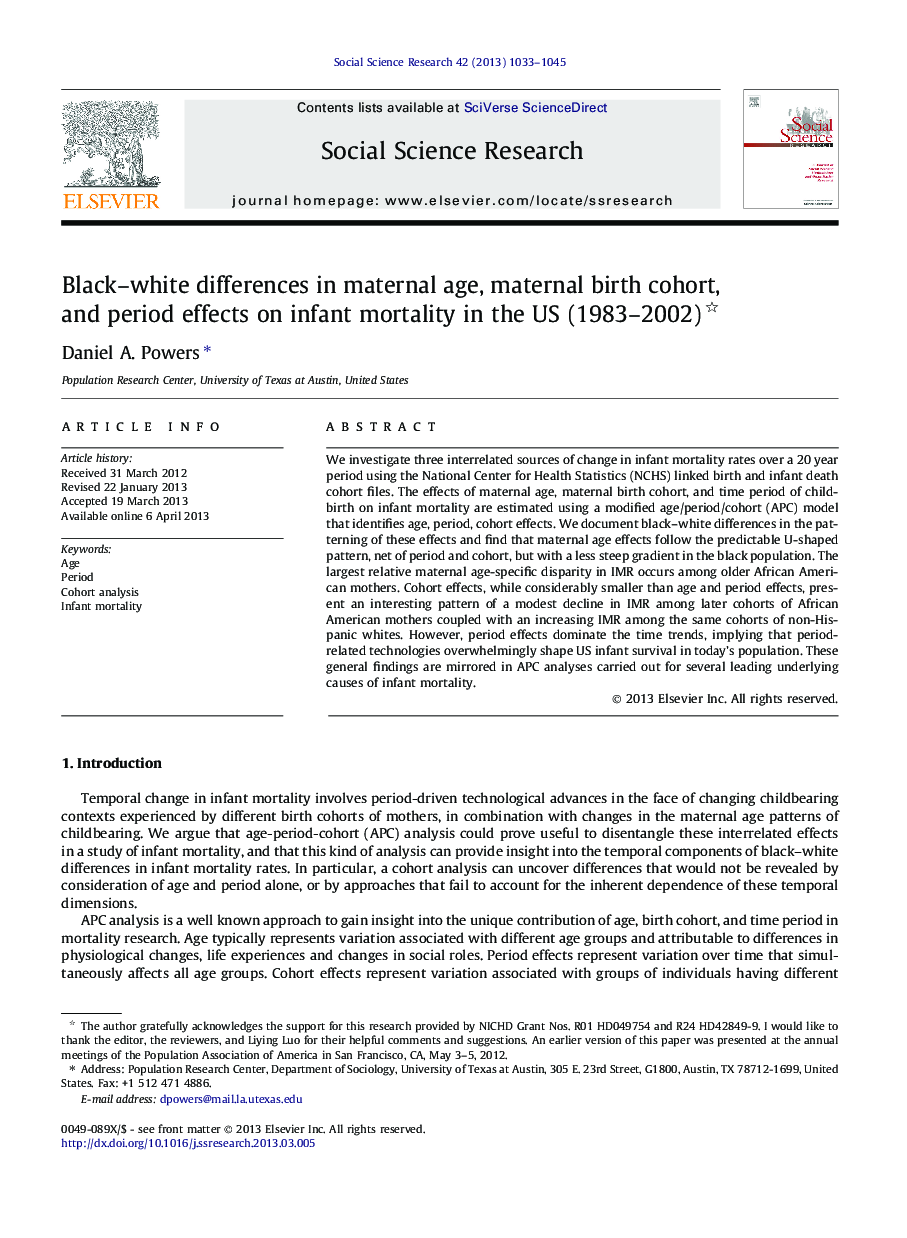| Article ID | Journal | Published Year | Pages | File Type |
|---|---|---|---|---|
| 955800 | Social Science Research | 2013 | 13 Pages |
•We examine sources of black–white differences in change in infant mortality over time.•APC analysis helps to disentangle interrelated age, period, and cohort effects.•Period effects dominate change in specific causes of death over time.•Higher infant mortality is observed for more recent cohorts of whites.•The intrinsic estimator for APC effects has roots in much older methods.
We investigate three interrelated sources of change in infant mortality rates over a 20 year period using the National Center for Health Statistics (NCHS) linked birth and infant death cohort files. The effects of maternal age, maternal birth cohort, and time period of childbirth on infant mortality are estimated using a modified age/period/cohort (APC) model that identifies age, period, cohort effects. We document black–white differences in the patterning of these effects and find that maternal age effects follow the predictable U-shaped pattern, net of period and cohort, but with a less steep gradient in the black population. The largest relative maternal age-specific disparity in IMR occurs among older African American mothers. Cohort effects, while considerably smaller than age and period effects, present an interesting pattern of a modest decline in IMR among later cohorts of African American mothers coupled with an increasing IMR among the same cohorts of non-Hispanic whites. However, period effects dominate the time trends, implying that period-related technologies overwhelmingly shape US infant survival in today’s population. These general findings are mirrored in APC analyses carried out for several leading underlying causes of infant mortality.
